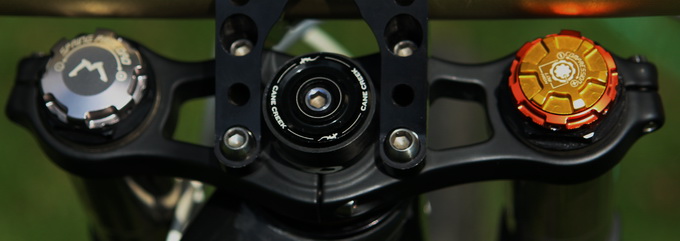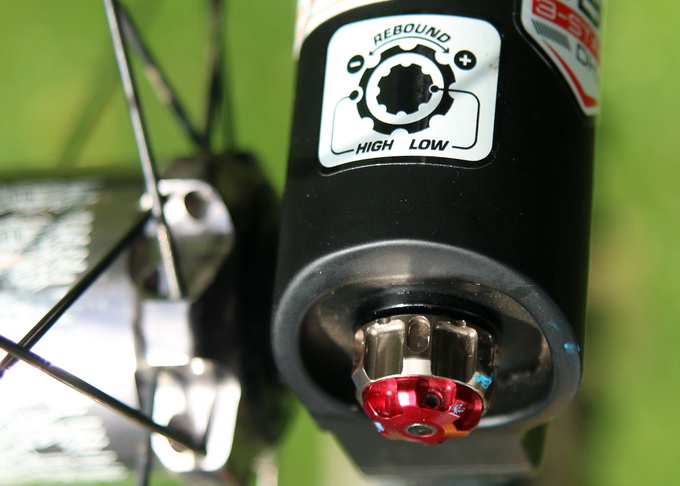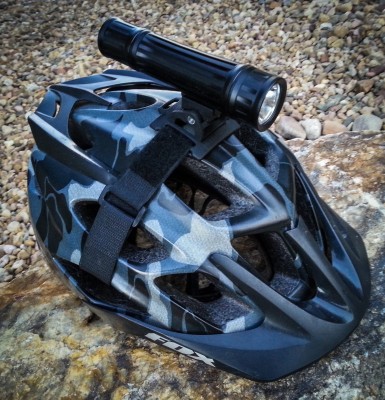Marzocchi has entered into the 2014 suspension wars in a big way with an all-new dual-crown downhill fork: the 380 C2R2 Titanium.
Specs
The biggest deal about the new 380 is the at least 200 grams of weight reduction compared to last year’s 888 RC3 EVO V.2 Ti. That’s a big loss considering that the 380 has switched to an all-new dampening cartridge.
Some of the biggest drops in weight come in obvious spots such as the upper and lower crowns. The upper crown has been machined down as much as possible to keep the weight at a minimum and still provide the needed strength. The lower crown’s weight was removed internally. The lower crown was formed then hollowed out, keeping strength and stiffness as high as possible for its given weight and boxed shape. The hollow lower represents a 40-gram savings all on its own over the previous lower crown.
Another neat weight savings is the Titanium M5 hardware VS steel bolts. Even though the savings is a couple of grams in total, it’s a savings… and it’s titanium… mmmmm.
The fork I have in for review features the straight 1 1/8″ steerer tube. An optional tapered steerer tube is available as well. I would have gone with that, and the 30-gram savings that it provides, but I needed the straight steerer for my V10’s Angleset headset.
With new nickel-coated CNC tapered walled 7050 T73 series aluminum stanchions machined to 38mm diameter, the new 380 is super strong.
Down low, the new magnesium lowers are totally different than those on the older 888. No longer will you see the “M” arch, but a new, flatter, wider arch that works with both 26″ and 27.5″ wheels. Along with the improved front-facing arch, the rest of the lowers are redesigned with a wider spacing between DU bushings.
The wider DU spacing improves fork feel, reducing flex, which in turn reduces stiction. Also, the SKF lower friction seals provide improved sensitivity, which altogether improves small bump compliance. This also counts for an additional weight savings of 100 grams in the process.
Titanium bolts right at the very bottom of the fork lowers hold the improved taper wall alloy axle.
Inside the stanchions the magic continues. The 380 uses an all-new damper cartridge called the C2R2 DBC dampening cartridge, which allows for high and low speed compression as well as high and low speed rebound control. The Dynamic Bleed Cartridge (DBC) uses technology from open bath systems as well as sealed cartridge systems, creating a hybrid system that uses a low pressure and a compensation reservoir. The pressure comes from a calibrated coil spring, instead of air, which provides a linear build on pressure. There are two oil flow circuits in this system. When the damper cartridge experiences high shaft velocities, fluid will rush out of the cartridge when the system gets under too high of pressure. Oil will then get sucked into the cartridge through a one-way seal, which avoids air getting mixed with the fluid and essentially acting as a bypass.
As for tuning, the controls are located at the top and bottom of the fork. Starting up top, the inner dial, the low-speed compression, is essentially a needle uncovering a bypass port, while the outer dial, the high-speed compression (HSC) circuit, is a bit more complex. The HSC uses two concentric circuits on a shim stack. The first works by mid velocity disturbances deflecting the shim stack and allowing fluid flow. For higher speed events, the shim stack is pushed away, uncovering a port for free fluid flow.
The movement of the piston can be preloaded by adding more spring tension via the outer dial. An added bonus is the ability of the compression shim stack to be easily removed from the top of the fork without the need for a rebuild or bleed. If you feel that you need the compression to ramp up a bit faster mid stroke, you can change up the shim stack.
Official Specs:
- Travel: 200mm
- Weight: 2750g / 6.06 lbs
- Wheelsize: 26″ – 27.5″
- Axle Taperwall: 20mm
- Stanchions: 38mm aluminum nickel treatment
- Damping (L): titanium spring K=5,5 N/mm
- Damping (R): C2R2 / Spring coil
- Steerer: Tapered aluminum or 1-1/8” straight aluminum
- Brake System: 8″ post mount MA x disc 230mm
- Color: Flat black matching crowns
For even more tech information, check out this video from Marzocchi:
Out on the Trail
Tuning the 380 took a bit of work. I tend to ride forks with their out-of-the-box factory settings for a day or so just to break in the seals. Switching everything full open, I then set the ride height and have a buddy help me measure the amount of sag. Being a fatty, I had to turn in the preload spring a few turns ’till I got it right. After that, I set all the dials in the middle range of their respective tunes. It was immediately apparent that I was getting a bit of kick back on my hands.
The 380 in the top of its travel is a very lively fork, so I had to add more HSR in the front. I go 2 clicks at a time ’till I can compress the fork and not have it toss me back on the bike. One of my testing grounds, Blue Mountain, is riddled with roots and rocks. I had a tough time deciding if I wanted a plush ride or something that reacted faster. Again, I’m not a racer, and not a young gun anymore, so I tend to slow things down a bit more than I should, but not so much so that I lose travel over prolonged rock gardens.
I settled on these settings:
- Preload: 5 turns
- LSC: 5 turns
- HSC: 4.5 turns
- LSR: 4 turns
- HSR: 2.5 turns
The 380 is a bit more lively than other forks, but when pressed hard into high speed berms it behaved very well with good tracking characteristics. Once tuned, I had no issues with the fork compressing too much. I did notice that the fork followed the terrain rather nicely. I also enjoyed the high speed circuits, which behaved very well: just like a well-designed fork should. I didn’t feel any annoying buck when the fork extended back, either.
During my review I had no durability issues whatsoever, despite launching over jumps and plowing through rock gardens. The fork didn’t complain once.
If I was hard-pressed to find anything negative to say, I would say a slight change in the LSC/LSR circuits would be welcome for most of the riders out there.
Bottom Line
Overall the Marzocchi 380 C2R2 Ti is a great improvement over their previous 888. The 888 is still around, and I guess would make for an excellent park fork. But for those who are dreaming big and want a super-light build on their DH rig, the 380 C2R2 may just be the ticket. It looks like the new 380 is placing Marzocchi back in the spot light!
MSRP: $1,850
A big thanks to the folks at Marzocchi for sending down the 380 for review.




























